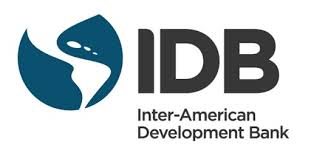Local exports increase by 86.7 per cent
THE export performance of all trade blocs in the Latin American and Caribbean (LAC) declined significantly in the first half of 2020 due to the novel coronavirus (COVID-19) pandemic, but in the Caribbean, the evolution was different due to the surge in oil exports from Guyana, where aggregate exports have increased by 86.7 per cent.
The Inter-American Development Bank (IDB), in its 2020 Trade and Integration Monitor, which was released on Tuesday, said the contraction in exports during the first half of 2020, to the U.S. (-19 per cent), the European Union (-18.6 per cent), and, to a lesser extent, China (-1.0 per cent), played a decisive role in the LAC’s trade performance, accounting for two-thirds of the overall downturn.
However, intra-regional flows fell at even higher rates within all LAC blocs: –30.3 per cent in the Andean Community(AC); –24.6 per cent in The Southern Common Market (MERCOSUR); –24.0 per cent in the Pacific Alliance; and –8.8 per cent in Central America and the Dominican Republic.
Similarly, according to the IDB, a limited sample of Caribbean countries suggests that intra-zone exports from the region contracted by 25.4 per cent, excluding Guyana, whose notable increase in oil exports has set it apart.
A limited sample of CARICOM countries — including Barbados, Belize, Guyana, Jamaica, and Suriname — show that they increased their intra-bloc exports by 54.2 per cent, and those to the rest of LAC by 63.8 per cent in 2019, while total exports fell 7.1 per cent due to a decrease in sales to the rest of the world (–17.7 per cent).
And, during the first half of 2020, intra-bloc trade increased significantly, by 60.8 per cent, as did sales to the rest of LAC by 24.7 per cent, and total exports by 10.2 per cent. However, this increase was explained exclusively by the performance of Guyana, whose exports increased by 86.7 per cent in 2020 when compared to 2019, after the country started exploiting new oil fields.
MASSIVE INCREASE
Guyana, according to the IDB, increased its exports within the bloc (CARICOM) by 164.2 per cent, to the rest of LAC by 159.9 per cent, and to the rest of the world by 76.9 per cent. In the first half of 2020, total shipments fell by 24.1 per cent in the rest of the Caribbean countries for which data is available, (a drop of 25.4 per cent for intra-bloc flows, and one of 17.1 per cent to the rest of LAC).
Intra-regional trade, according to the IDB, was already contracting at a faster rate than flows to the rest of the world in 2019, and it plummeted further in the first part of 2020, due to the economic crisis triggered by the pandemic. However, given its share in LAC’s total exports, extra-regional demand accounted for most of the drop in total external sales.
“The main contractionary factors were sales to the US, and to a lesser extent the EU, while sales to China dropped less, due to the exceptional increase in Southern Common Market (MERCOSUR) exports to this country. Although intra-zone trade dropped in all LA integration blocs, this was more pronounced in the AC and MERCOSUR,” said the IDB.
The pandemic weakened the demand of LAC’s major trading partners, and imports from the region fell significantly in the first half of 2020.
According to the IDB, when the crisis hit, demand from LAC’s main buyers had already deteriorated, a trend that had begun in late 2018.
UNPRECEDENTED IMPACT
The outbreak of COVID-19 and the attendant measures to contain it had an unprecedented impact on all LAC destination markets, triggering a widespread drop in exports. The prices of the region’s main export commodities were affected quickly, even before the full effects of the pandemic hit.
“The greatest impact came from the drop in oil prices, while the effect on metals and minerals, and on agricultural products was relatively minor. However, unlike recent trade crises, on this occasion, the shock was primarily driven by a sudden drop in volumes.
“Looking ahead, the prospects for recovery are still uncertain, despite some positive signs in certain indicators relating to prices and trade operators’ expectations on global activity. The next chapter describes the performance of trade in goods and services across different LAC countries and sub-regions,” said the IDB.
The IDB report concluded that countries in the region should make decisive moves towards an ambitious agenda of international integration policies, if they are to capture new investments and take advantage of nearshoring opportunities.
The pandemic has exposed challenges that point clearly to a need to make headway on the institutional strengthening of export promotion and investment attraction agencies, trade facilitation and the modernisation of customs, the diversification of the services sector, and trade digitalisation.
The IDB also determined that there is a need for pragmatic solutions to certain longstanding challenges. For example, reducing transportation costs through investment and reforms in the infrastructure sector will be critical for the region’s economies to position themselves competitively in the global production networks of the future
Additionally, given that the ongoing transformation of globalisation will have a profound impact on business strategies, the IDB suggests that it would be essential to strengthen regional integration and cooperation initiatives to position the region’s economies within an efficient and reliable regulatory space that is attractive for investors.






















